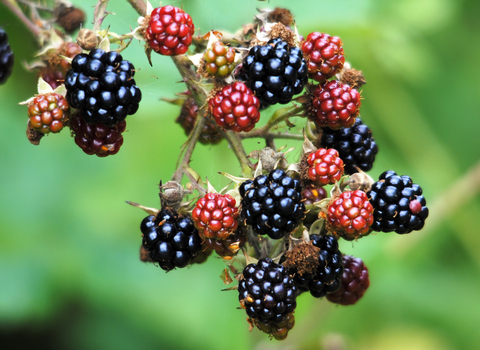©Philip Precey

Bramble (blackberries) ©Amy Lewis
Bramble
The bramble is the thorny shrub of hedges, woods and scrub that gives us delicious blackberries in autumn. Gathering wild food can be fun, but it's best to do it with an expert - come along to a Wildlife Trust event to try it.
Enw gwyddonol
Rubus fruticosusPryd i'w gweld
January to DecemberSpecies information
Ystadegau
Height: up to 3mCommon.
